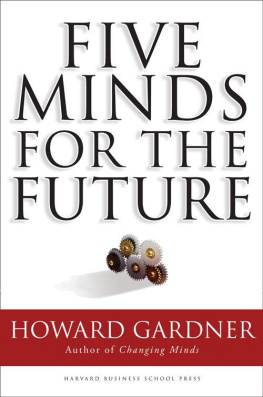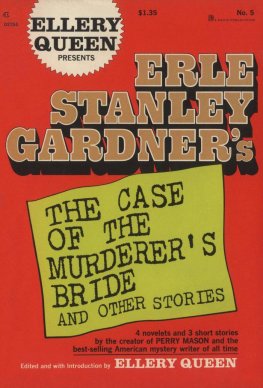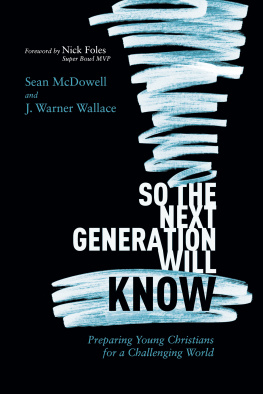Preface
T HIS BOOK IS THE happy product of a long-standing research program, a pair of new questions, and a wonderfully fortuitous collaboration. For many years, Howards research group at Harvard Project Zero has been studying the development in children and adolescents of cognitive mastery and an ethical orientation. Around 2006, our group began to address two new questions. Prompted by the research agenda enabled by Jonathan Fanton at the MacArthur Foundation, we began to study how the new digital media were affecting the ethical compass of young users. At roughly the same time, we began an extended, broader conversation with Judy Dimon about the ways in which young peoples thought processes, personalities, imaginations, and behaviors might be affected and perhaps radically transformed by their involvement with these media.
When one launches a new project, one cannot anticipate the answers that will be forthcoming or the form that the answers will take. Katie Daviss research interests in the emerging identities of young persons stimulated her to study the blogs kept by young persons and then to undertake a dissertation on the sense of identity of young people in her home country of Bermuda. At an early point in her doctoral studies Katie joined the research group directed by Carrie James and Howard, and almost magically, a joint agenda and writing project emerged. Once we realized that todays young people could be revealingly described as the App Generation, it was clear that we needed to write this book. And given the willingness of Katies sister Molly and of Howards grandchild Oscar to speak with the authors, the beginning and the end of the bookcovering a span of several generationsessentially wrote itself. We authors are responsible for the intervening pages.
We were fortunate to have a great deal of help with this book project. Special thanks to Carrie James, our indispensable partner in research for the past seven years. We are also grateful to our talented and dedicated research team at Harvard Project Zero, including Margaret Rundle, Celka Straughn, Margaret Weigel, and Emily Weinstein, and for more limited periods Marc Aidinoff, Zach Clark, Donna DiBartolomeo, Emma Heeschen, and Emily Kaplan. These colleagues contributed to all aspects of the research, from study design and participant recruitment to interviewing and data analysis. We have also benefited from a tremendous support staff in Howards office: Kirsten Adam, Victoria Nichols, and Danny Mucinskas.
Katies sister Molly was an enthusiastic and thoughtful collaborator throughout our writing, providing a valuable perspective as we reflected on the defining characteristics of the App Generation. And, while not directly involved in this project, Katies other sister, Alaire (just one year older than Molly), was also present in our thoughts as we stitched together the three-generation narrative that runs throughout the book.
Thank you to our many interview and focus group participants, well over one hundred persons. We appreciate your willingness to spend time with us and engage our questions thoughtfully. We also wish to thank those who helped us to coordinate these interviews and focus groups, including Themis Dimon, Mary Skipper, and Shirley Veenema.
We are very grateful to Nancie Atwell, Anne Gisleson, and John and Stephanie Meyer for providing us with access to a treasure trove of art and fiction written by youth over the preceding twenty years. We were hoping to include examples of the artwork we analyzed in the pages of this book, but unfortunately we were unable to contact all of the artists to obtain their permission.
With respect to the Bermuda-based research, Katie wishes to thank the Ministry of Education and school principals for taking an interest in her research and providing access to their schools.
Others have also helped us with various aspects of the book. We thank Michael Connell, Andrew Gardner, and Justin Reich for valuable suggestions. As careful readers of the whole manuscript, we are particularly grateful to Larry Friedman, Carrie James, and Ellen Winner.
At Yale University Press, we thank particularly our editor, Eric Brandt, our manuscript editor, Laura Jones Dooley, and our publicist, Elizabeth Pelton. The whole, often challenging process of launching and steering a book project was made immeasurably easier by Hope Denekamp, Jill Kneerim, and Ike Williams of the Kneerim Williams Literary Agency.
Finally, our work wouldnt have been possible without the generous support of Judy and Jamie Dimon, as well as Jonathan Fanton, Robert Gallucci, Julie Stasch, and Connie Yowell of the MacArthur Foundation.










